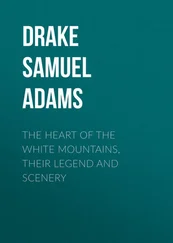Figs. 14 to 16 illustrate three stages in the development of the drainage of the Weald. In each the line of dots represents the main axis of the Wealden uplift. When the dome was first uplifted (Fig. 14) chalk covered the whole and water drained naturally and consequently down the northern and southern slopes forming consequent streams. In the next stage (Fig. 15) the chalk has been removed by denudation over the central area and some streams have become stronger than others and subsequent streams, running in strike valleys, have developed. Fig. 16 shows the developments at the present day. The three divisions shown are the Tertiary, the Chalk and the pre-Chalk beds. It is clear that such a river as the Darent has had its headwaters captured by the Medway.
Perhaps even more common in nature is the initiation of a drainage system by uplift accompanied by folding. If the rocks are raised up to form a broad arch or anticline, consequent streams flow down either side following the general dip of the rocks. Thus consequent streams follow the dip of the rocks. Very soon two things will happen. Some streams will become stronger than others—it may be through some slight differences in the relative softness or hardness of the beds over which they are flowing. They deepen their beds more rapidly than their neighbours, they cut back at their heads (headward erosion) more rapidly. Water which might have gone into neighbouring streams drains into them by laterals which, because they thus develop subsequently to the main consequent are known as subsequents. The subsequents flow at right angles to the dip of the rocks—that is along the strike—and so are flowing in strike valleys. In due course some of the more vigorous subsequents capture the waters and drain the valleys of the weaker consequents and so, by this process of river capture, a complex system develops. It may even happen that the flow of water in part of a former consequent valley is reversed so that it becomes an obsequent stream feeding the conquering subsequent.
Such a river system as that just described may cut down on to older rocks which lie underneath the sheets of strata which gave it its birth. Indeed all traces of those later rocks may be completely removed. On to the older rocks there is implanted a river system which seems to have simply no relationship to the structure. This is a common feature in many parts of the British Isles and gives us the reason for the passage of the Bristol Avon through Clifton Gorge when there apparently were so many other easier courses. Such a system is called a superimposed drainage. But in its further development the members of the system will find out the weaker rocks, the lines of faulting and crushing, and it is along such lines that the major excavation will take place.
What happens when earthquakes and folding movements take place in an area with a well developed river system? There may be reversals of drainage and many examples of river capture can only be explained by postulating differential earth movements. But if folding movements take place slowly existing rivers in their downcutting may keep pace with the growth of folds and one gets thus examples of antecedent drainage which may be defined as drainage developed in its early stages before the present surface features. For the supreme examples of this one must look to the mighty rivers of the Himalayas which cut right through the greatest chain of mountains on the face of the earth.
The sequence of development of consequents, subsequents and obsequents was worked out by W. M. Davis in the river systems of the Weald which is thus classical ground. One may picture the Wealden dome, in structure resembling an overturned boat, rising by slow stages from the latter part of the Cretaceous period downwards. At first the uplift formed a low dome scarcely above sea level but sufficiently near the sea surface for wave action to get to work wearing away the chalk and rolling the angular flint nodules into pebbles. By Middle Eocene times the ridge was sufficiently high to be partly covered by shingle beds (Blackheath Pebble Beds) and the crest probably formed an island. As soon as an island appeared above the surface consequent streams flowing from the east-west crest to the north and to the south developed. By a combination of marine erosion and then of sub-aerial denudation the chalk was entirely eroded from the central area and revealed below the varied succession of beds which make up the lower Cretaceous. Some of the beds are weak and easily eroded, others are relatively resistant. Subsequent streams found out the weaker rocks and eroded valleys at right angles to the consequent streams, some of which cut down through the chalk and to-day are seen flowing in steep-sided valleys through the chalk rim of the North Downs and the South Downs. The weaker consequents were beheaded by the capture of their head streams and many failed to cut down through the chalk. The Weald thus illustrates extremely well the association of subsequent streams with valleys in the weaker rocks which are parallel to the strike of the rocks (strike valleys) whereas the consequents have valleys parallel to the dip of the rocks (dip valleys). The later history of the Weald has been complicated by the submersion of much of the area under the Pliocene sea, then its subjection to tundra conditions during the Great Ice Age and by the complications caused by the breaching of the eastern end of the fold when Britain became separated from the continent, but the main pattern of the drainage has remained as it was developed by the gradual uprise of the Weald. The phenomena of subsequent streams occupying well-defined strike valleys is repeated all over the lowland of Britain.
The form of a river valley is able to yield much information both with regard to the age of the valley itself and the history of the river system.
Mountain torrents stand rather by themselves: they cut deep notches in the mountain sides (an example is given in Plate 2), usually finding some line of weakness, as for example along a fault where the rocks have been crushed, and the material which is dislodged is swept to lower levels both by the power of the water and by the force of gravity. If dislodged blocks fall by gravity alone they form screes with an angle of rest of about 40°—the angle of the scree shown on Plate 8B is exactly 38°. If the fall is aided by running water the debris is fanned out and has a lower angle of rest—forming what is termed an alluvial fan or alluvial cone (such as the ones shown on Plate 30B) though the word “alluvial” is apt to cause confusion with the much finer material associated with deltas and with the flood plains of the lower courses of rivers.
Where initial slopes are not quite so steep the mountain stream carves out a narrow steep-sided V-shaped valley. Even at this early stage the valley is not straight: the stream swings from side to side so that “interlocking spurs” develop between the meanders and obstruct the view upstream. Nature has provided the swiftly flowing stream with a remarkable mechanism for drilling holes in its bed. A few stones are caught in a whirl of water and swing round and round to drill out the well-known “pot-holes.” This is an active force in deepening the bed of the river and so of its valley. An excellent and large example is shown in Plate VIIIA. Widening of the valley comes gradually with the action of gravity—lateral slipping aided by tributary streams so that, broadly speaking, the older or more mature the valley the wider it is. In these early stages the form of the valley, especially its long section (i.e. the section drawn down the valley—the longitudinal profile for which the not very appropriate German word talweg is often used), is closely related to the character of the rocks over which it passes. Hard bands cause rapids or waterfalls and between these the river may assume the characteristics of maturity. In cross-section the valley sides may exhibit ledges due to the outcrops of hard bands whilst dipping strata may cause a valley with an asymmetric cross section. Even more common is the varying width of the valley—broad and open where it traverses soft rocks, narrow and even gorge-like where it passes through a belt of hard rocks or limestone. Even an old river like the Thames has these features—the beautiful narrow valley at Goring is where it passes through the chalk ridge.
Читать дальше












